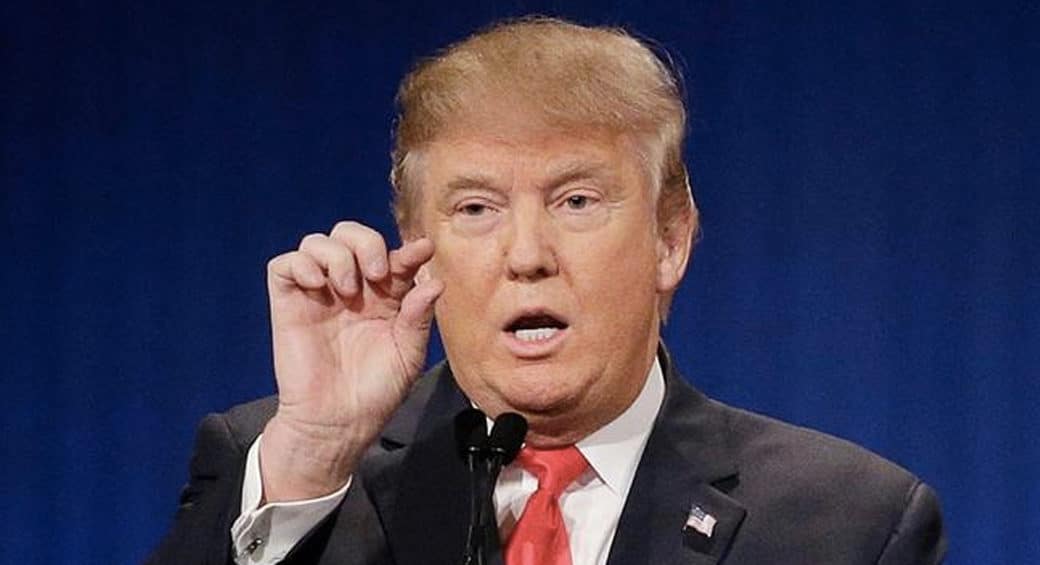In statements at the National Governor’s Association Winter Meeting, President Trump has claimed that the administration’s 30% tariff on imported solar cells and modules is generating manufacturing benefits for the United States. The President also touted U.S. solar panel quality relative to Chinese manufacturing.
Per a report from TheHill.com, Trump took time at the meeting to mention the Section 201 trade tariff, one of the few times he has discussed the solar industry since becoming president. He began claiming the USA had, at one point, 32 solar panel manufacturing plants but that 30 of them had closed down.
“Now, they’re talking about opening up many of them, reopening plants that have been closed for a long time,” Trump said. “And we make better solar panels than China. One of their knocks were that the solar panels were lousy, they weren’t good. We make a much higher quality solar panel.”
In evaluating Trump’s statement, quality is inherently hard to measure. While it is notable that no Tier 1 Chinese companies offer 25-year workmanship warranties, PV modules made in Southeast Asia and Japan offer such assurances, as do those produced by Oregon’s SolarWorld. SunPower’s X-Series modules – made in Southeast Asia – offer higher efficiencies than any U.S.-made products.
Also, the track record of the Section 201 tariffs so far are mixed. By pv magazine’s count, 880 new solar manufacturing jobs have been announced, and 200-300 more can be assumed, with a possibility of another 200 more. No closed manufacturing facilities have re-opened, however, one company – Mission Solar – has announced that it will increase its production on existing lines.
JinkoSolar also announced a deal to invest $410 million and build a pv module manufacturing factory in Jacksonville, Florida. The company estimates 800 new jobs will be created.
Solartech Universal, also in Florida, announced an expansion of its Riviera Beach based work force from 45 to 75 by adding a new production shift. The company has approximately 80-85 MW of annual manufacturing capacity in the USA.
Solaria, a California manufacturer, announced an expansion of its global manufacturing capacity from 100 MW/year to 300 MW/year by the end of 2018, including an expansion of its U.S. production. Currently, the group has a capacity of 40 MW/year in their Fremont, California facilities. The company has not provided details as to capacity it will add in the United States or the numbers of U.S. jobs it will create.
Mission Solar, based in Texas is also expanding. It has already rehired 50 workers to bring it back to a 200 MW/year capacity. And just three weeks ago, pv magazine discovered that the company plans to double the capacity of its production in San Antonio from 200MW/year to 400 MW/year. The number of jobs involved is not known.
SolarWorld announced in September, at the outset of the Section 201 trade case, that they might re-hire 200 workers by May of this year as a result of greater market confidence. As of December, they’d not made any new hires.
It is notable that Trump’s statement did not accurately present the current number of U.S. PV module factories. pv magazine has found as many as 17 full-scale PV module manufacturers in the United States, however we have only found two that have the capacity to produce more than 200 MW annually. Additionally, SunPower has a 5 MW pilot line in Silicon Valley.
And to put these jobs in perspective, Solar Energy Industries Association (SEIA) warns of 23,000 fewer solar jobs as a result of the tariff, due to lower installation volumes caused by higher prices.
SEIA, for its part, is still trying to undermine the rationale for the decision by the International Trade Commission (ITC) that gave Trump the ability to impose tariffs in the first place.
“Let there be no doubt that the tariff decision was bad for American jobs and our economy,” reads a statement by SEIA President and CEO Abigail Hopper. “These tariffs will raise prices for U.S. solar customers and cause thousands of Americans to lose their jobs.”
Editor’s note: this article was updated at 10:25 AM EST on February 27, to include comments by SEIA.
This content is protected by copyright and may not be reused. If you want to cooperate with us and would like to reuse some of our content, please contact: editors@pv-magazine.com.








By submitting this form you agree to pv magazine using your data for the purposes of publishing your comment.
Your personal data will only be disclosed or otherwise transmitted to third parties for the purposes of spam filtering or if this is necessary for technical maintenance of the website. Any other transfer to third parties will not take place unless this is justified on the basis of applicable data protection regulations or if pv magazine is legally obliged to do so.
You may revoke this consent at any time with effect for the future, in which case your personal data will be deleted immediately. Otherwise, your data will be deleted if pv magazine has processed your request or the purpose of data storage is fulfilled.
Further information on data privacy can be found in our Data Protection Policy.